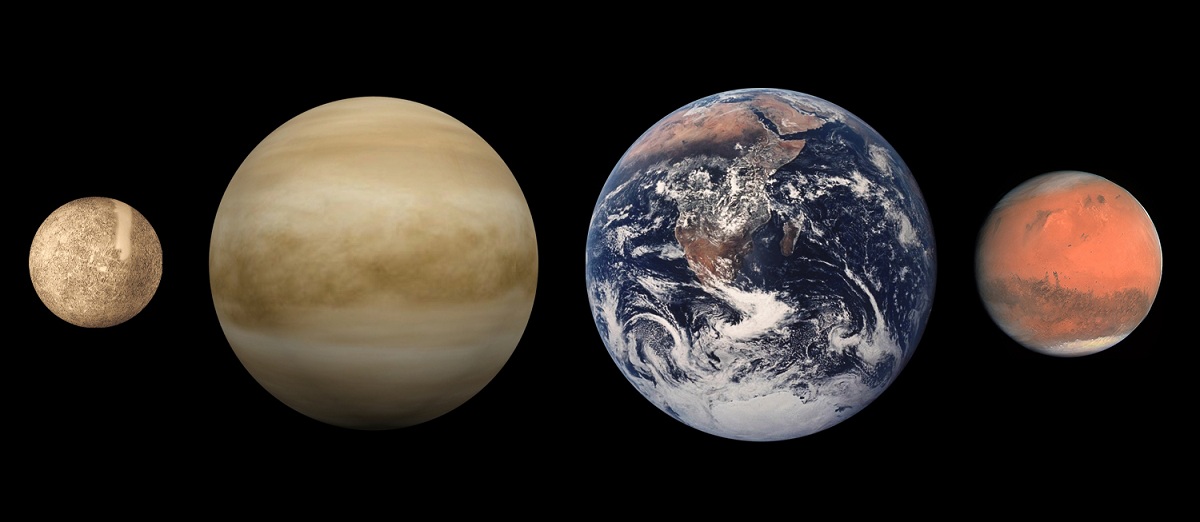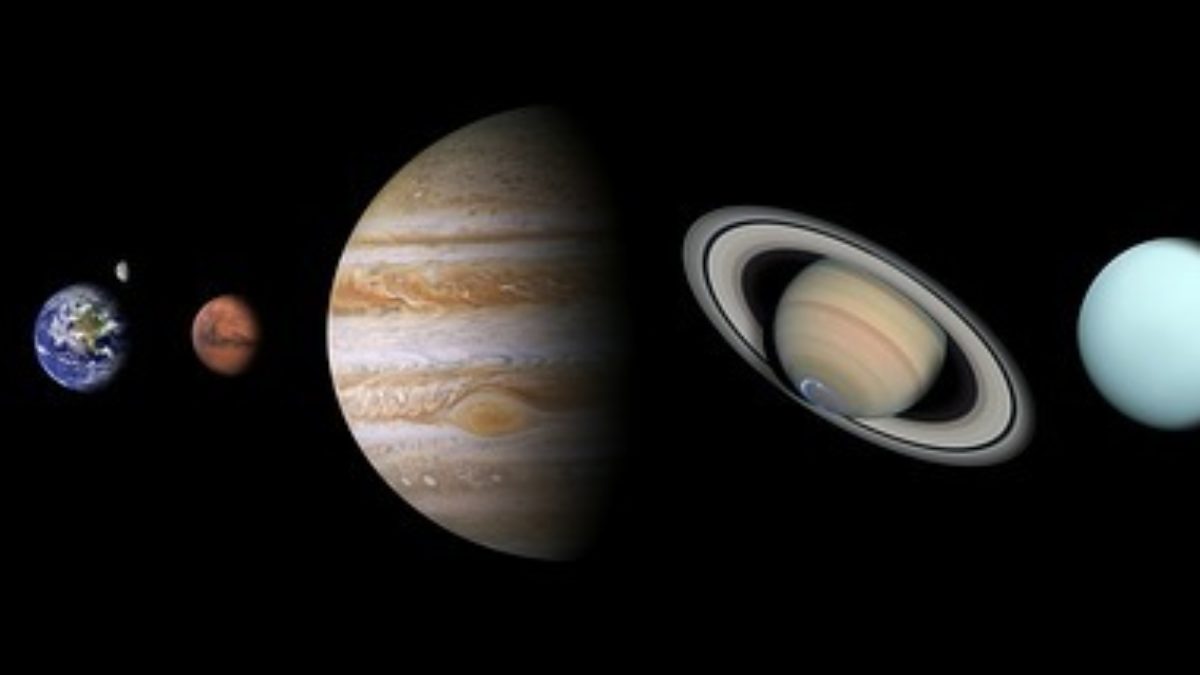
When we refer to all the planets that Orbit around the sun and that make up the solar system, we divide them into inner planets and outer planets. The inner planets are those that are located in the part closest to the sun. On the other hand, the exteriors are those that are further away. Among the group of inner planets we have the following: Earth, Mars, Venus y Mercury. In the group of outer planets we have the following: Saturn, Jupiter, Neptuno y Uranus.
In this article we are going to focus on studying all the characteristics of the inner planets.
Characteristics of the inner planets

As we mentioned at the beginning of the article, these are those planets that are located in a part closer to the sun. In addition to sharing this location with respect to the sun, the group of inner planets have other characteristics in common. Among these characteristics we find a similar size, composition of its atmosphere or the composition of its core.
We are going to analyze what are the different characteristics of the inner planets. First of all, they are much smaller in size if we compare it with the size of the outer planets. They are known by the name of rocky planets since their surface is made up of silicates. These silicates are minerals that form rocks. Being formed by these high concentrations of minerals, it can be said that these rocky planets have a high density. The density values vary between 3 and 5 g / cm³.
Another characteristic of the inner planets is their rotation on the axis. Unlike other planets, the rotation on its axis is very slow. That of the planets Mars and the Earth take 24 hours to turn around on itself, while that of Venus is 243 days and that of Mercury is 58 days. That is, for Venus and Mercury to be able to turn around their own axis, all those days must pass.
The inner planets are also known by the name of telluric planets. This is because the nucleus of these planets is made up of earth and rock. The only ones that have an atmosphere are Mars, Venus, and Earth. These planets are characterized by emitting less energy than they receive from the sun. Another name by which these planets are known is by the name of minor planets. This name comes from its size compared to the gigantic proportions of the last planets in the solar system.
They have some characteristics in common, such as a similar structure and composition, a central part core and different layers that vary in proportion from one planet to another.
Inner planets

Mercury
It is the first in the list of the inner planets. This is because it is the closest planet to are in the entire solar system. It is located at a distance of about 0.39 astronomical units from the sun. Being so close to the sun and receiving a large amount of energy, it lacks an atmosphere. This makes the surface temperature of this planet too high during the day and too low at night. Temperatures of 430 degrees during the day and -180 degrees at night can be observed. As you might expect, with this range in temperature affiliation, the fact that there is life on this planet is almost unquestionable.
One of the characteristics that Mercury has is that it has the highest density within the inner planets. Its core is made of high-density iron and its core occupies a large part of the entire mass of the planet. It has no satellite revolving around it and one of the aspects that makes it interesting is the amount of craters and holes that have its surface. These craters have been formed due to the amount of objects that collide with it since it has no protection as it has no atmosphere. One of the largest holes that have been formed is approximately 1600 kilometers in diameter and has been called the Platina Caloris. Since it is not exactly well known, it is thought that it may be a volcanic plain.
Venus
It is the second planet within the group of those closest to the sun. It is located at a distance of 0.72 astronomical units from the sun. Its density and approximate diameter are close to those of Earth. Unlike Mercury, Venus does have an atmosphere. It is composed mainly of carbon dioxide, nitrogen and in proportions other gases such as hydrogen sulfide.
A constant and persistent cloud cover can be seen. These characteristics are due to its atmosphere since it is a planet very hot with temperatures above 460 degrees. Its atmospheric pressure is around values between 93 to 200 hPa. It is thought that in the past it could have had liquid water, but that idea has been discarded today. One of the curiosities that this planet has is that its translational movement is shorter than that of rotation.
The earth

Little to say about this planet that we don't already know. However, we are going to do some review of the features. It is located 1 astronomical unit from the sun. It has a satellite known as the Moon. The cover of the earth's surface is made up of 76% water. It has a magnetic field with an appreciable intensity. It is the only planet where life is known as a self-reproductive, adaptive, metabolic capacity and capable of taking energy from the environment that surrounds it.
It has an atmosphere made up of nitrogen in higher proportions and oxygen. In smaller proportions we find other gases such as carbon dioxide, water vapor, argon and dust particles in suspension. The rotation is equivalent in time in 24 hours and the translation takes about 365 days.
Mars
It is the last of the group of inner planets. They are at a distance of 1.52 astronomical units from the sun. It has a reddish color and is therefore called the red planet. The duration of the rotation is 24 hours and 40 minutes, while the translation around the sun runs it in 687 days. This atmosphere we see that it is made up of carbon dioxide mainly, and in smaller proportions water, carbon monoxide, oxygen, nitrogen and argon.
I hope that with this information you can learn more about the inner planets and their main characteristics.